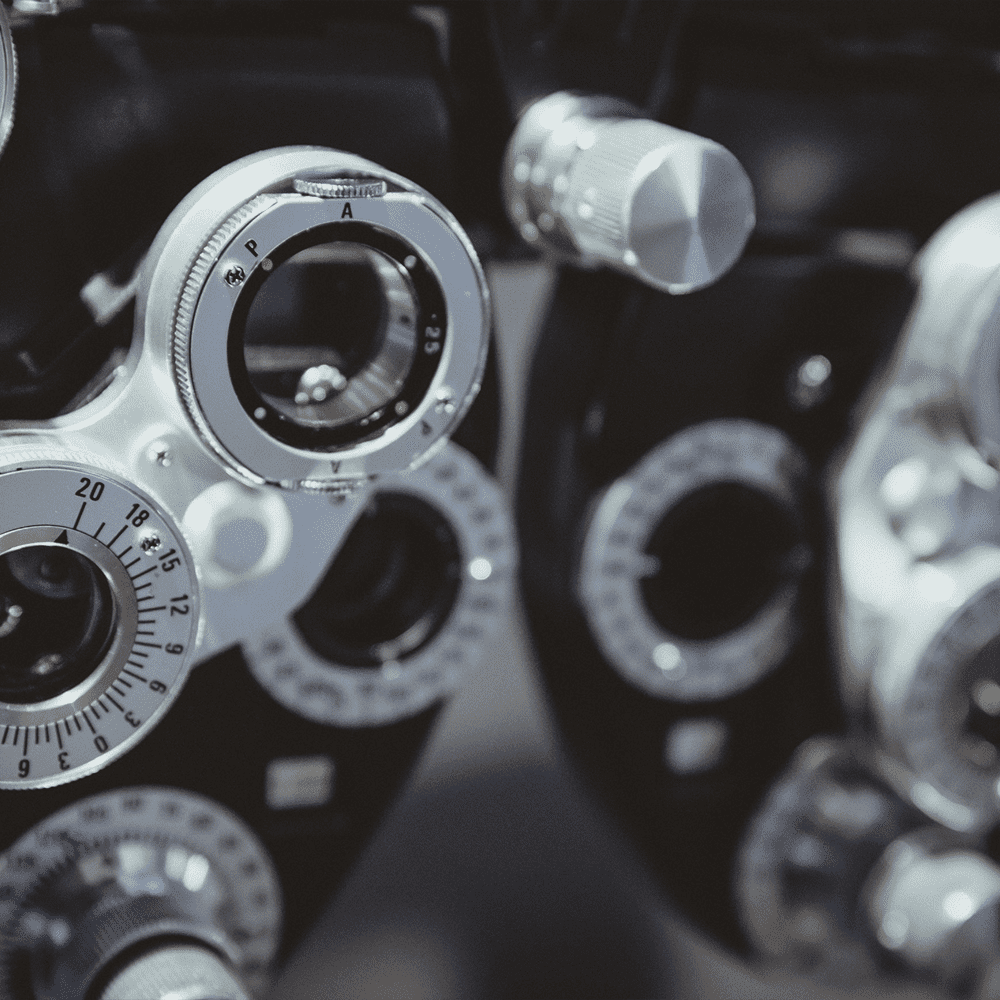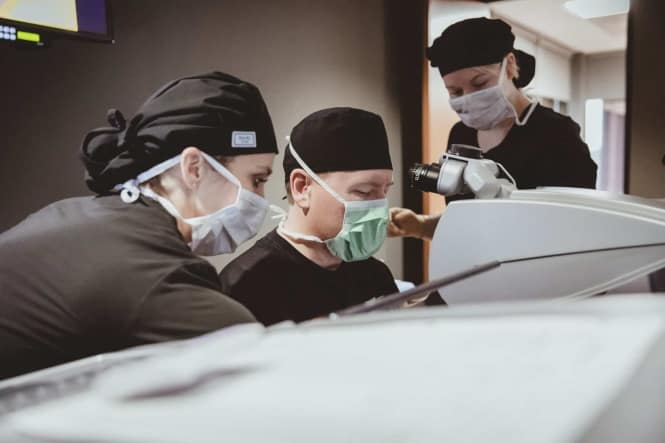Smile Vision Correction
SMILE vision correction: the LASIK alternative with LASIK-like results
SMILE – Small Incision Lenticule Extraction – is a minimally invasive procedure correcting nearsightedness and astigmatism. This safe and effective alternative to LASIK delivers the same exceptional visual results – clear vision without the hassles of glasses and contacts.
For Treating
Astigmatism, Mild – Moderate Nearsightedness
"Amazing facility! Amazing staff! Amazing doctors!"
– Jasmine

Is it Right for You?
SMILE Vision Correction is an excellent solution for someone who is at least 18 years old with a stable vision prescription for a year. Factors that can affect candidacy are the degree of the refractive error as well as the thickness and shape of the cornea – all determined during testing.
You should also have healthy eyes with no underlying conditions such as cataracts, glaucoma, or corneal diseases. If you have any of these conditions, they must be treated and stabilized before vision correction can be considered.
What to Expect
Our friendly and knowledgeable staff will guide you through the entire process, answering any questions and calming any nerves.
SMILE is a 10-15 minute out-patient procedure
You will need a driver on the day of surgery and for your one-day post-op appointment
After the one-day post-op, patients can typically return to their regular daily activities, with a few restrictions
You can expect your vision to be blurry for the first few hours after surgery, followed by a significant improvement in vision over the following days
Our doctors follow our patients' recovery with regular post-op visits throughout the year following surgery
Benefits of Laser Vision Correction
Improved Vision
See better without glasses and contacts.
Safer Vision
LASIK is 5x safer than contacts due to contact lens-related infections
Save Money
No need to buy contacts, glasses, and cleaning solution again.
Get Time Back
Eliminate all daily hassles that come with glasses and contacts.
SMILE Vision Correction FAQs
I have astigmatism. Can I still get laser vision correction?
Yes! In fact, laser vision correction procedures like SMILE and SBK Advanced LASIK are excellent treatments for astigmatism. These procedures eliminate astigmatism by flattening or steepening the curvature of the cornea.
What if I’m not a candidate?
While SBK Advanced LASIK is the most commonly performed vision-correction procedure at Durrie Vision, it’s not the only one that can help you see better. Advancements in vision correction mean there are new procedures, techniques and technologies leading to more options for more people.
What are the risks of laser vision correction?
The decision to have a vision correction procedure is a personal one. Rest assured, serious complications with modern vision correction procedures are extremely rare. Many of them can be reduced or eliminated through our thorough pre-op diagnostic testing.
How soon after SMILE vision correction can I return to normal activities?
Good news! One of the greatest benefits of SMILE vision correction is the quick recovery time. While you can expect your vision to be blurry the first few hours after the procedure, you should be able to resume work and normal activities the following day.
Does SMILE vision correction wear off?
One of the most common misconceptions about LASIK procedures like SMILE is that it wears off, but the reality is that it lasts. That’s because the eye has two lenses – the cornea on the front surface and the lens inside. LASIK, PRK, and SMILE all result in a permanent change to the cornea. Natural changes in the eye’s internal lens can affect near vision beginning in your 40s and technologies exist to improve vision when those changes occur.
Get Started with a Free Consultation
Our Advanced Ocular Analysis (AOA) is the first step in determining the best vision correction procedure for you. Your eyes will be examined using the most advanced diagnostic testing and technologies available. You will then meet with one of our experienced doctors who will discuss your analysis. You will leave with a comprehensive report from the analysis as well as our recommendations for treatment including recovery times, costs, and financing options.
Don’t just take our word for it!
Schedule a Free Consultation
During your free consultation visit, you will meet with an experienced refractive surgeon who will discuss your results along with a custom recommendation for treatment.
Take the LASIK Eligibility Assessment
Are you a candidate for laser vision correction? Let's find out. Take our 60-second online test to see what procedure might be the best option for your vision and lifestyle.
From The Experts At Durrie Vision
5 Questions You Should Ask Your Refractive Surgeon
How You Can Prepare Yourself for Laser Vision Correction in Overland Park, KS If you’ve relied on contact lenses or eyeglasses to bring your vision into focus for any number of years, you’ve had at least one thought about laser vision correction cross your mind....
How Your Overall Health Can Affect Your Eyes
Durrie Vision Considers Lots of Information to Determine Your Candidacy for Laser Vision Correction in Kansas City You take good care of your eyes, but did you know that certain medical conditions can lead to vision loss or other eye symptoms? Seeking prompt medical...
6 Types of Laser Eye Surgery | Kansas City Vision Correction Surgery Specialists
Learn About the 6 Types of Laser Eye Surgery What is the first procedure that comes to mind when you think of laser eye surgery? If you said LASIK, you’re definitely not the only one. However, despite popular belief, LASIK is not the only vision correction option...





